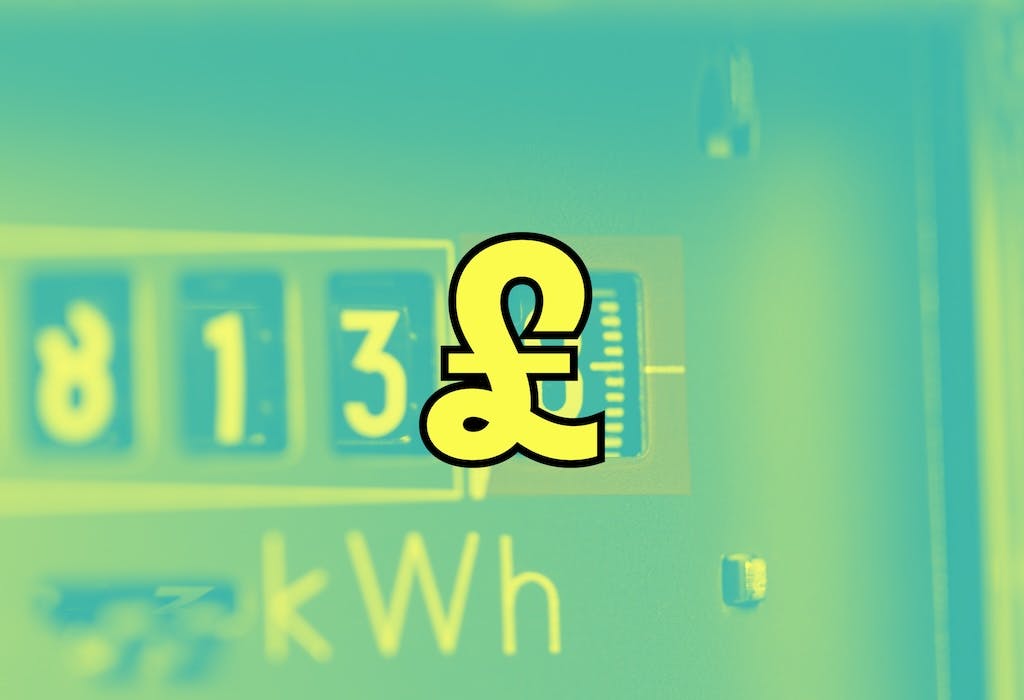What is a standing charge and why do we have them?
Understand why most UK households also have to pay a standing charge, and learn the cases for and against keeping them.
Written byMelody Abeni

⚡ Almost all energy tariffs include a standing charge
📍 Your standing charge will depend on your location and meter type
💷 You can find tariffs with no standing charges, but they’re expensive
Almost all households in the UK pay a standing charge on their energy bill, which is a fixed rate that doesn’t change regardless of energy usage.
There’s an ongoing debate about whether the standing charges on our energy bills are a fair deal, particularly given the cost-of-living crisis. For example, Money Saving Expert’s Martin Lewis thinks high standing charges are a “moral hazard”, and Ofgem are in the process of formally reviewing them.
This article will explore the impact of these charges and whether there are any alternative solutions.
What are standing charges?
Standing charges are fixed daily fees included in energy bills to cover the costs of maintaining the energy supply infrastructure and providing customer services. These charges apply regardless of how much energy you use, and you’re legally obligated to pay them if they are part of your tariff.
This means that a household with solar panels will pay the same amount in standing charges as a household without any solar.
The vast majority of energy tariffs in the UK include a standing charge.
Why do we have standing charges?
Standing charges exist to cover the fixed costs of supplying energy to your home or business, such as energy network maintenance, meter readings, and emergency services.
These charges ensure that the infrastructure for delivering gas and electricity is always available, reliable, and well-maintained. This way, even if you use little or no energy, the necessary support and services remain in place.
It’s basically the UK energy market’s version of National Insurance.
What are the current standing charges in the UK?
The average UK household pays more than £300 per year in standing charges. However, your specific standing charges will depend on your location and the type of meter you have.
As of July 2024, the average capped daily standing charge for those who pay for electricity by direct debit in all regions is 60.1p per day, and for gas it’s 31.4p per day. Those in the North Wales and Mersey area are usually hit with the highest rates.
The capped average standing charges for prepayment meters are now the same as direct debit standing charges, which is good news for households, as it means cheaper bills.
Why do standing charges vary by region?
Standing charges vary by region in the UK because of differences in the costs of delivering energy services in each area - local geographical factors and different demand and supply dynamics both play a key role in network maintenance and upgrades.
The level of regional variance in standing charges can be substantial. There's often a 25p per day difference between regions at the upper and lower ends of the spectrum - which can add up to nearly £100 in costs over a year.
Why are standing charges so high?
The UK has seen an increase in standing charges over the past 10 years due to a few different factors:
- The failure of 29 suppliers during the energy crisis meant that consumers had to foot the bill through higher electricity standing charges
- The expansion of grants and schemes to support vulnerable households with their energy costs also meant increased bills to fund them
- Various regulatory adjustments over the years have affected how energy companies structure their charges
- Standing charges also cover the national costs of upgrading technology for the green energy transition
- General inflation and changes in the broader economy - for example, due to the recent conflicts in Ukraine and the Middle East - continue to contribute to high energy prices and standing charges
The fluctuating standing charges can generally be tied to the complex market dynamics and external factors that control the energy industry and disrupt the delicate balance of supply and demand. This includes unforeseen events, like geopolitical tensions or extreme climate change-induced weather.

How much do standing charges cost UK households each year?
The typical annual bill for gas and electricity standing charges is more than £300, based on the national average standing charges of 31.4p per day for gas and 60.1p per day for electricity.
These figures are based on the energy price cap for July to September 2024, which keeps prices in line with wholesale energy costs for those on default energy tariffs. But as we’ve seen, standing charges can vary depending on regional differences.
Should the UK abolish standing charges?
There’s an ongoing debate about whether standing charges on energy bills should be abolished and reformed to make it fairer for all consumers.
Some, like consumer champion Martin Lewis, the National Energy Action (NEA) charity and senior figures at Centrica and Octopus Energy, argue that standing charges unfairly affect those with lower energy usage, including the most vulnerable. But others argue that taking them away would force costs to increase in other places, making the situation worse.
There’s a particularly strong argument for reducing (or eliminating) the standing charge for households with solar panels, given they rely far less on the grid than other households. If this were to happen, it would provide a greater financial incentive for families to switch to solar and make the push for Net Zero more achievable.
To tackle the issue, Ofgem launched a review in November 2023 to gather views on standing charges and explore potential changes to the system. The review closed in January 2024 after garnering over 20,000 responses, so it’s now a case of waiting for Ofgem’s report and recommendations.
What’s the argument for keeping standing charges?
Those who support standing charges say it's a fairer and simpler way of making sure all users contribute to the fixed costs of maintaining the energy network, keeping it technologically sound and running it efficiently.
Without standing charges, these costs would have to be redistributed, likely leading to higher unit rates. This could disproportionately affect heavier energy users and those who are already struggling to meet the cost of their energy bills.
Are there any energy providers that don’t have standing charges?
Technically, energy companies don’t have to enforce a standing charge and can charge less than what’s set out in Ofgem’s price cap. But you’ll be limited in supplier choices if you’re looking for a tariff with no standing charges.
Outside of the popular “Big Six” suppliers, which rarely offer these types of tariffs, you may be able to avoid standing charges with smaller suppliers like Utilita. Keep in mind, however, that these tariffs consequently higher unit rates (i.e. cost per kWh of gas/electricity used).
Pros and cons of a tariff with no standing charge
| You're charged only for the energy you consume, making it ideal for low-use properties | These tariffs can be pricier for those who use a lot of energy |
| If your property is empty for a long time (e.g. for renovations), these rates can reduce your energy costs | Despite no standing charges, the higher unit rates can still end up costing you more money in the long run |
| It's simpler to understand your bills when you're only paying for what you use | Most major energy suppliers don't have these tariffs, and they might not be available everywhere or in every situation |
Before choosing a tariff with no standing charges, it’s wise to evaluate your energy usage patterns and consider the overall cost implications. These tariffs suit specific circumstances, like properties that sit empty for most of the year.
If you're not a big energy user, these tariffs can be a good way to save money. But if you’re a gadget fiend, a relatively expensive zero standing charge tariff probably won’t be worth it for you.
Do other countries have standing charges?
Standing charges are common in many parts of the world for covering the fixed costs of supplying electricity and gas, but their setup can vary from how it works in the UK.
Examples include the United States with monthly basic fees, Australia with daily supply charges, and European countries like Germany and France with similar standing charge arrangements to the UK.
Summary
Standing charges on energy bills are a common practice, covering the fixed costs of maintaining the energy supply infrastructure.
While there are debates about whether they're necessary or if there are better alternatives, knowing their purpose and exploring tariff options that match your energy consumption patterns can help you make more informed choices about your gas and electricity bills.
Standing charges: FAQs
Why do you have to pay a standing charge?
The standing charge on your energy bill covers the fixed costs associated with providing gas and electricity to your home. This includes maintaining the energy network, reading meters, and providing customer service.
Standing charges apply regardless of how much energy you use, ensuring that the infrastructure necessary for energy supply is always available and reliable.
How do you avoid standing charges?
To avoid standing charges on your energy bill, look into tariffs that offer no standing charges. These tariffs only charge you for the energy you use and have no daily fees. But bear in mind that these tariffs usually have higher rates, so they're only worth it for properties with low energy usage or when the property is empty most of the time (e.g. a holiday home).
If you’re moving home, you could also try asking your supplier to pause the charges temporarily.
How much is the electricity standing charge per day?
The daily electricity standing charge if you're on the July-September 2024 price cap is 60.1p per day.
However, the electricity standing charge you pay will vary depending on your payment method, location, electricity supplier, and the terms of your tariff.

Written byMelody Abeni
Based in London, Melody is a specialist green technology writer who has been covering sustainability, climate action and ESG for the past five years, after gathering operational experience in green investing and financial services. She has written for various industry publications, including renewable technology advisor The Eco Experts, and she holds a Master’s degree in law from Birkbeck University.